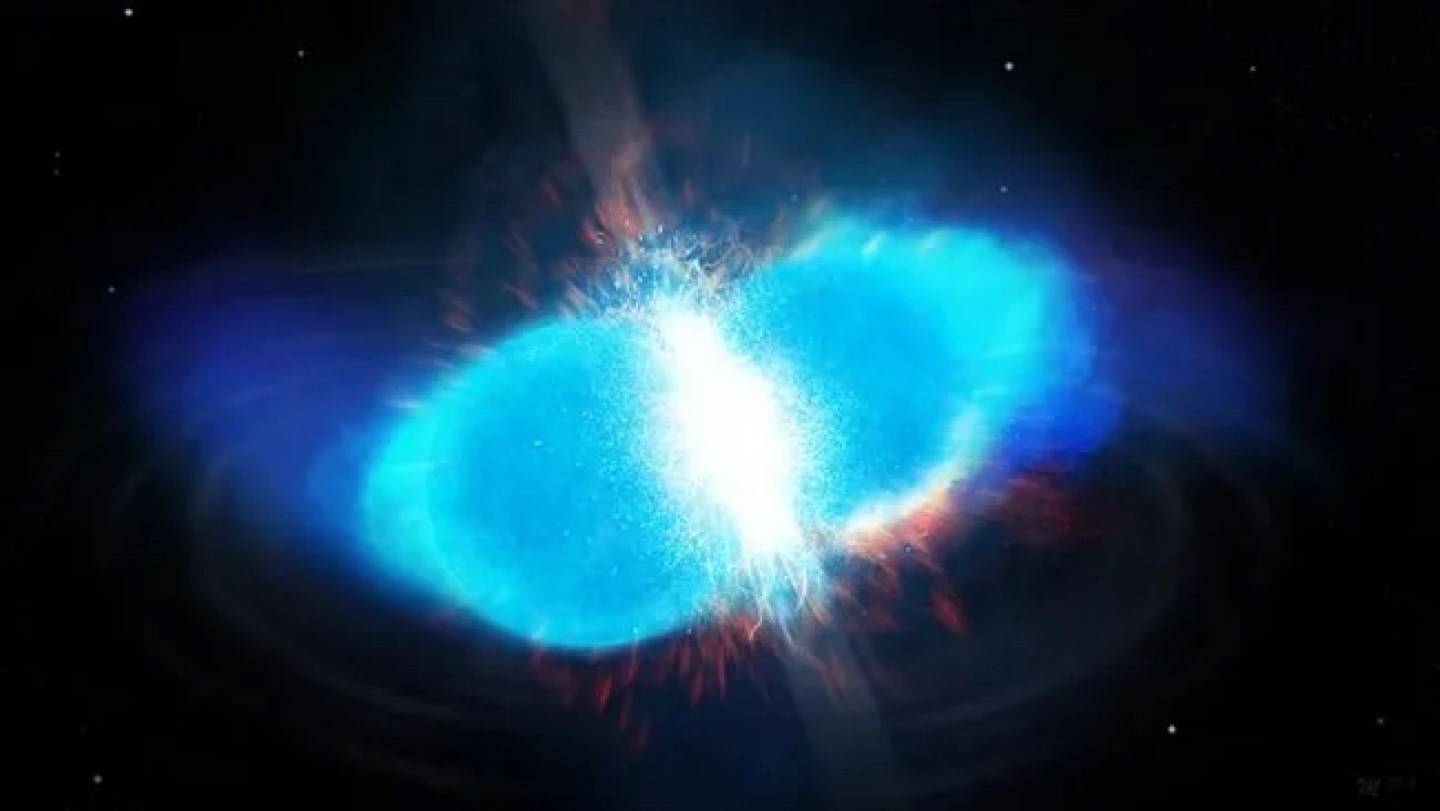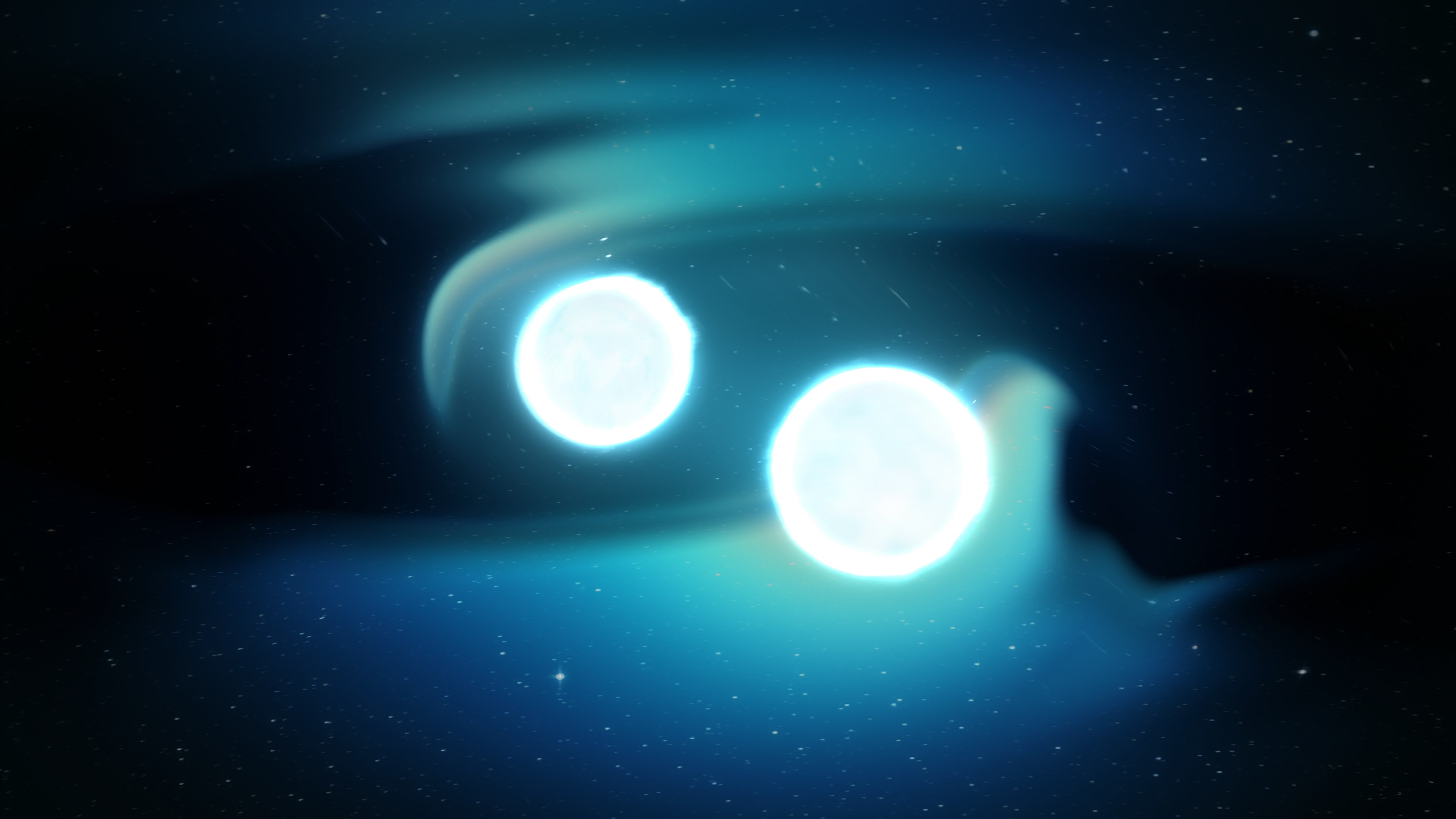 Scientists have discovered the first sign of nuclear fission occurring between stars. This discovery supports the idea that when neutron stars collide with each other, they create “superheavy” elements that are heavier than the heaviest elements in the periodic table, and these break apart through nuclear fission to give rise to elements such as gold.
Scientists have discovered the first sign of nuclear fission occurring between stars. This discovery supports the idea that when neutron stars collide with each other, they create “superheavy” elements that are heavier than the heaviest elements in the periodic table, and these break apart through nuclear fission to give rise to elements such as gold.never seen before
Nuclear fission can basically be described as the opposite of nuclear fusion. While nuclear fusion means the breaking down of lighter elements to form heavier elements, nuclear fission is a process that refers to the energy released when heavy elements break down to form lighter elements. We know nuclear fission quite well because nuclear bombs and nuclear power plants work on this principle. However, it has never been seen to occur among stars until now.
Although scientists think that fission is occurring somewhere in space, no one has been able to prove it until now. More recently, a research team led by North Carolina State University scientist Ian Roederer explored data on a wide range of elements in stars to discover the first evidence that nuclear fission may be at play as neutron stars merge. These findings could help solve the mystery of where heavy elements in the universe come from.
Scientists know that nuclear fusion is not only the primary source of energy for stars, but also the power that forms various elements, the “heaviest” of which is iron. But heavier elements such as gold and uranium were a matter of mystery. Scientists think that these valuable and rare heavy elements were formed when two incredibly dense dead stars (neutron stars) collided and merged.
Neutron stars and nuclear fission
 As massive stars consume the resources required for their fusion processes, they lose the fight against their own gravity and collapse, eventually forming neutron stars. As the outer layers of these dying stars blow away, their cores, normally one to two times the mass of the Sun, collapse to a width of only 20 kilometers. While this core collapse occurs at incredible speeds, if a teaspoon of material from these stars were brought to Earth, it would weigh more than 1 billion tons.
As massive stars consume the resources required for their fusion processes, they lose the fight against their own gravity and collapse, eventually forming neutron stars. As the outer layers of these dying stars blow away, their cores, normally one to two times the mass of the Sun, collapse to a width of only 20 kilometers. While this core collapse occurs at incredible speeds, if a teaspoon of material from these stars were brought to Earth, it would weigh more than 1 billion tons.These neutron stars can sometimes exist as a binary pair. In these cases, it is inevitable for neutron stars to collide and merge. When this final neutron star merger occurs, large numbers of free neutrons, particles normally bonded with protons in the atomic nucleus, are released. The released neutrons can be captured by other atoms through a process called the “r-process”. This can cause the atomic nuclei to become heavier, creating unstable superheavy elements. These superheavy elements can then fission to split into lighter, stable elements such as gold.
Matthew Mumpower, a scientist at Los Alamos National Laboratory and co-author of the research, explained this process in detail in a study in 2020. This prediction can be tested not only by looking at neutron star mergers, but also by looking at the abundance of elements in stars enriched by material created by the r-process.
The new research examined 42 stars and found precise correlations with theoretical information, showing a clear signature of fission and decay of elements heavier than those found in the periodic table. This confirmed that neutron star collisions are indeed places where elements heavier than iron are forged.
Mumpower said in a statement: “The correlation is very solid in stars enriched by the “r-process” for which we have sufficient data. “Every time nature produces a silver atom, it also produces proportionately heavier rare earth nuclei.”